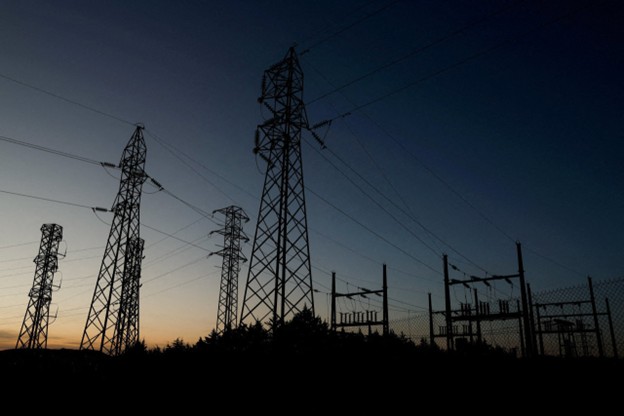Energy
Why Bad Climate Legislation Is Worse Than No Climate Legislation

From Michael Schellenberger
Moderate Democratic Senators Joe Manchin & Krysten Sinema Are Right to Oppose the Clean Energy Performance Program
Progressives are angry that moderate Democratic Senator Joe Machin has reportedly opposed the inclusion of climate-related legislation in President Joe Biden’s budget “This is absolutely the most important climate policy in the package,” said Leah Stokes, a Canadian political scientist who helped write the legislation. “We fundamentally need it to meet our climate goals. That’s just the reality.”
But that’s not the reality. The “Clean Energy Performance Program” is not needed to meet climate goals, and might actually undermine them.
Consider Waxman-Markey. That’s the name of the “cap and trade” climate legislation that passed the House but failed in the Senate in 2010. It had a climate goal of reducing U.S. greenhouse gas emissions by 17 percent below 2005 levels by the year 2020. Instead, the U.S. reduced its emissions by 22 percent.
Had cap and trade legislation passed in the Senate, emissions would have declined less than 22 percent, because Waxman-Markey so heavily subsidized coal and other fossil fuels. As the Los Angeles Times reported at the time, “the Environmental Protection Agency projects that even if the emissions limits go into effect, the U.S. would use more carbon-dioxide-heavy coal in 2020 than it did in 2005.”
The same thing would likely have been true for the Clean Energy Performance Program, which lock in natural gas. Consider France. According to the Commision de Regulation de L’Energie, €29 billion (US$33) billion was used to purchase wind and solar electricity in mainland France between 2009 and 2018. But the money spent on renewables did not lead to cleaner electricity. In fact, the carbon-intensity of French electricity increased.
After years of subsidies for solar and wind, France’s 2017 emissions of 68g/CO2 per kWh was higher than any year between 2012 and 2016. The reason? Record-breaking wind and solar production did not make up for falling nuclear energy output and higher natural gas consumption. And now, the high cost of renewable electricity is showing up in French household electricity bills.
Some pro-nuclear people supported the proposed Clean Energy Performance Program. They claimed it would have saved existing nuclear plants at risk of closure. According to the U.S. Energy Information Administration, the closure of nuclear plants including Diablo Canyon in California, will result in nuclear energy in the U.S. declining by 17% by 2025. If the Program had passed, some pro-nuclear people believe, plants like Diablo Canyon could have been saved.
But the Clean Energy Performance Program would not have saved Diablo Canyon for the same reason it would not have saved Indian Point nuclear plant, which closed in New York, earlier this year: progressive Democratic politicians are forcing nuclear plants to close, and at a very high cost to ratepayers.
If the Clean Energy Performance Program had passed into law, Diablo Canyon’s owner, Pacific Gas & Electric, would simply have passed the $500 million to $1.5 billion penalty imposed by the Program onto ratepayers, along with the other billions in costs related to closing Diablo Canyon 40 years earlier than necessary. The same would have happened with Indian Point.
Where there is political support for saving nuclear plants, state legislators and governors save nuclear plants, as they did in Illinois a few weeks ago, and as they have done in Connecticut, New Jersey, and with up-state nuclear plants in New York. In other states, nuclear plants are protected from cheap natural gas by regulated electricity markets. And now, with natural gas prices rising dramatically, any nuclear plants at risk of closure for economic reasons are no longer at risk.
What threatens the continued operation of nuclear power plants, and nuclear energy in general, is the continued subsidization of renewables, which the Clean Energy Performance Program would have put on steroids. Under the program, utilities would have received $18 for each megawatt-hour of zero-emissions energy it produces between 2023 to 2030, on top of the existing $25 per megawatt-hour subsidy for wind energy.
Under such a scenario, notes energy analyst Robert Bryce, a wind energy company “could earn $43 per megawatt-hour per year for each new megawatt-hour of wind energy it sells. That’s a staggering sum given that the wholesale price of electricity in New York last year was $33 per megawatt-hour. In Texas, the wholesale price of juice was $22 per MWh.”
Manchin is joined in his opposition to the Plan by moderate Democratic Arizona Senator, Krysten Sinema, and understandably so. The legislation would cost Arizona ratepayers nearly $120 billion in additional electricity costs, according to energy analysts Isaac Orr and Mitch Rolling of the American Experiment. “This would result in a 45 percent increase in electricity prices by 2031, compared to 2019 rates,” they note.
As troubling, the Clean Energy Performance Program would increase dependence on solar panels made in China by incarcerated Uighyr Muslims living in concentration camps and against whom the Chinese government is committing “genocide,” according to the U.S. State Department. New research shows that China made solar panels cheaper through the use of forced labor, heavy government subsidies, and some of the dirtiest coal in the world. The Program would have done nothing to shift production of solar panels back to the U.S.
Nor would the legislation have done anything to internalize the high cost of solar panel waste disposal. Most solar panels become hazardous waste, and create dust from heavy metals including lead, as soon as they are removed from rooftops. A major study published in Harvard Business Review earlier this year found that, when the high cost of managing toxic solar panel waste is eventually accounted for, the true cost of solar electricity will rise four-fold.
As troubling, the continued expansion of weather-dependent renewables will increase electricity costs and blackouts across the United States, as they did in California and Texas. Those renewables-driven blackouts were likely on Senator Manchin’s mind when he made his decision to oppose the Clean Energy Performance Plan. He certainly knows about the problems of renewables in Texas and California, since I discussed them directly with Manchin when I testified before his committee earlier this year.
A better approach would be for Congress to seek nuclear-focused legislation to expand nuclear from its current 19% of U.S. electricity to 50% by 2050. It should take as a model the British government’s announcement yesterday that it would put nuclear energy at the center of its climate plans. Global energy shortages triggered by the lack of wind in Europe have led nations to realize that any efforts to decarbonize electricity grids without creating blackouts must center nuclear power, not weather-dependent solar and wind.
Environmental Progress and I met with British lawmakers in 2019 to advocate for a greater focus on nuclear. At the time, many British energy analysts, as well as ostensibly pro-nuclear climate activists, Mark Lynas and George Monbiot, were telling the public that their nation did not need more nuclear, as Britain could simply rely more on wind energy, and natural gas. Now, electricity prices are skyrocketing and factories are closing in Britain, due to a bad year for wind.
It was a strange experience to be alone in Britain, without support from supposedly pro-nuclear Britons, in urging lawmakers to build more nuclear plants, but I was similarly alone in many other parts of the world, and got on with the task. Happily, one year later, former Extinction Rebellion spokesperson Zion Lights joined me in advocating for nuclear, and quickly forced the government to agree to a nuclear build-out.
Today, in the U.S., there is a growing grassroots movement for nuclear energy, one which saved nuclear plants, twice, in Illinois, and other states, and is gearing up to save Diablo Canyon nuclear plant in California. Doing so will require a new governor, since the current one, Gavin Newsom, made closing the plant a feature of his sales pitch to powerful environmental groups, including Sierra Club and Natural Resources Defense Fund which are, like Newsom himself, heavily funded by natural gas and renewable energy companies that stand to benefit from the Diablo’s destruction.
Leadership at the national level will need to come from Senators Manchin and Sinema. While a significant amount of electricity policy is determined by the states, the Senate can play a constructive role in maintaining the reliability, resiliency, affordability, I testified to Senator Manchin and other committee members. Senator Sinema is from Arizona, a state with the largest nuclear plant in the U.S., Palo Verde, and which is a model of how to make electricity both low in emissions, and in costs.
With the Clean Energy Performance Program now apparently dead, the Congress, led by Manchin and Sinema, should take policy action to not only keep operating the nuclear plants that have been critical to preventing power outages in recent years, but also expand them.
About Michael Shellenberger
Michael Shellenberger is a Time Magazine “Hero of the Environment,”Green Book Award winner, and the founder and president of Environmental Progress.
He is author of the best-selling new book, Apocalypse Never (Harper Collins June 30, 2020), which has received strong praise from scientists and scholars. “This may be the most important book on the environment ever written,” wrote climate scientist Tom Wigley. “Apocalypse Never is an extremely important book,” says historian Richard Rhodes, who won the Pulitzer Prize for The Making of the Atomic Bomb. “Within its lively pages, Michael Shellenberger rescues with science and lived experience a subject drowning in misunderstanding and partisanship. His message is invigorating: if you have feared for the planet’s future, take heart.”
Additional Reading:
Why Biden’s Climate Agenda Is Falling Apart
China Made Solar Cheap With Coal, Subsidies, And “Slave” Labor — Not Efficiency
Energy
China undermining American energy independence, report says
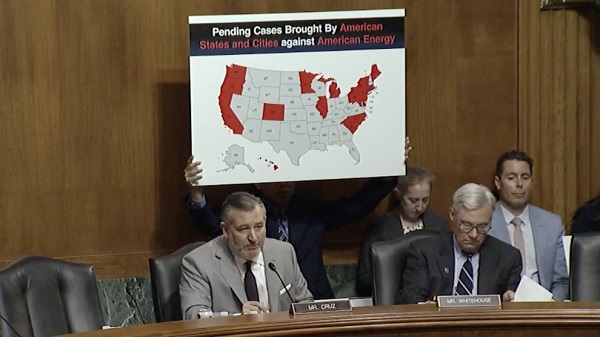
From The Center Square
By
The Chinese Communist Party is exploiting the left’s green energy movement to hurt American energy independence, according to a new report from State Armor.
Michael Lucci, founder and CEO of State Armor, says the report shows how Energy Foundation China funds green energy initiatives that make America more reliant on China, especially on technology with known vulnerabilities.
“Our report exposes how Energy Foundation China functions not as an independent nonprofit, but as a vehicle advancing the strategic interests of the Chinese Communist Party by funding U.S. green energy initiatives to shift American supply chains toward Beijing and undermine our energy security,” Lucci said in a statement before the Senate Judiciary Subcommittee’s hearing on Wednesday titled “Enter the Dragon – China and the Left’s Lawfare Against American Energy Dominance.”
Lucci said the group’s operations represent a textbook example of Chinese influence in America.
“This is a very good example of how the Chinese Communist Party operates influence operations within the United States. I would actually describe it as a perfect case study from their perspective,” he told The Center Square in a phone interview. “They’re using American money to leverage American policy changes that make the American energy grid dependent upon China.”
Lucci said one of the most concerning findings is that China-backed technology entering the U.S. power grid includes components with “undisclosed back doors” – posing a direct threat to the power grid.
“These are not actually green tech technologies. They’re red technologies,” he said. “We are finding – and this is open-source news reporting – they have undisclosed back doors in them. They’re described in a Reuters article as rogue communication devices… another way to describe that is kill switches.”
Lucci said China exploits American political divisions on energy policy to insert these technologies under the guise of environmental progress.
“Yes, and it’s very crafty,” he said. “We are not addressing the fact that these green technologies are red. Technologies controlled by the Communist Party of China should be out of the question.”
Although Lucci sees a future for carbon-free energy sources in the United States – particularly nuclear and solar energy – he doesn’t think the country should use technology from a foreign adversary to do it.
“It cannot be Chinese solar inverters that are reported in Reuters six weeks ago as having undisclosed back doors,” he said. “It cannot be Chinese batteries going into the grid … that allow them to sabotage our grid.”
Lucci said energy is a national security issue, and the United States is in a far better position to achieve energy independence than China.
“We are luckily endowed with energy independence if we choose to have it. China is not endowed with that luxury,” he said. “They’re poor in natural resources. We’re very well endowed – one of the best – with natural resources for energy production.”
He said that’s why China continues to build coal plants – and some of that coal comes from Australia – while pushing the United States to use solar energy.
“It’s very foolish of us to just make ourselves dependent on their technologies that we don’t need, and which are coming with embedded back doors that give them actual control over our energy grid,” he said.
Lucci says lawmakers at both the state and federal levels need to respond to this threat quickly.
“The executive branch should look at whether Energy Foundation China is operating as an unregistered foreign agent,” he said. “State attorneys general should be looking at these back doors that are going into our power grid – undisclosed back doors. That’s consumer fraud. That’s a deceptive trade practice.”
Energy
Carney’s Bill C-5 will likely make things worse—not better
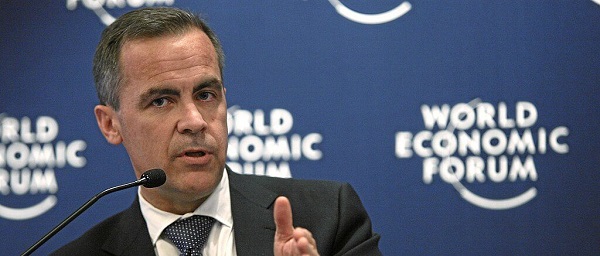
From the Fraser Institute
By Niels Veldhuis and Jason Clemens
The Carney government’s signature legislation in its first post-election session of Parliament—Bill C-5, known as the Building Canada Act—recently passed the Senate for final approval, and is now law. It gives the government unprecedented powers and will likely make Canada even less attractive to investment than it is now, making a bad situation even worse.
Over the past 10 years, Canada has increasingly become known as a country that is un-investable, where it’s nearly impossible to get large and important projects, from pipelines to mines, approved. Even simple single-site redevelopment projects can take a decade to receive rezoning approval. It’s one of the primary reasons why Canada has experienced a mass exodus of investment capital, some $387 billion from 2015 to 2023. And from 2014 to 2023, the latest year of comparable data, investment per worker (excluding residential construction and adjusted for inflation) dropped by 19.3 per cent, from $20,310 to $16,386 (in 2017 dollars).
In theory, Bill C-5 will help speed up the approval process for projects deemed to be in the “national interest.” But the cabinet (and in practical terms, the prime minister) will determine the “national interest,” not the private sector. The bill also allows the cabinet to override existing laws, regulations and guidelines to facilitate investment and the building of projects such as pipelines, mines and power transmission lines. At a time when Canada is known for not being able to get large projects done, many are applauding this new approach, and indeed the bill passed with the support of the Opposition Conservatives.
But basically, it will allow the cabinet to go around nearly every existing hurdle impeding or preventing large project developments, and the list of hurdles is extensive: Bill C-69 (which governs the approval process for large infrastructure projects including pipelines), Bill C-48 (which effectively bans oil tankers off the west coast), the federal cap on greenhouse gas emissions for only the oil and gas sector (which effectively means a cap or even reductions in production), a quasi carbon tax on fuel (called the Clean Fuels Standard), and so on.
Bill C-5 will not change any of these problematic laws and regulations. It simply will allow the cabinet to choose when and where they’re applied. This is cronyism at its worst and opens up the Carney government to significant risks of favouritism and even corruption.
Consider firms interested in pursuing large projects. If the bill becomes the law of the land, there won’t be a new, better and more transparent process to follow that improves the general economic environment for all entrepreneurs and businesses. Instead, there will be a cabinet (i.e. politicians) with new extraordinary powers that firms can lobby to convince that their project is in the “national interest.”
Indeed, according to some reports, some senators are referring to Bill C-5 as the “trust me” law, meaning that because there aren’t enough details and guardrails within the legislation, senators who vote in favour are effectively “trusting” Prime Minister Carney and his cabinet to do the right thing, effectively and consistently over time.
Consider the ambiguity in the legislation and how it empowers discretionary decisions by the cabinet. According to the legislation, cabinet “may consider any factor” it “considers relevant, including the extent to which the project can… strengthen Canada’s autonomy, resilience and security” or “provide economic benefits to Canada” or “advance the interests of Indigenous peoples” or “contribute to clean growth and to meeting Canada’s objectives with respect to climate change.”
With this type of “criteria,” nearly anything cabinet or the prime minister can dream up could be deemed in the “national interest” and therefore provide the prime minister with unprecedented and near unilateral powers.
In the preamble to the legislation, the government said it wants an accelerated approval process, which “enhances regulatory certainty and investor confidence.” In all likelihood, Bill C-5 will do the opposite. It will put more power in the hands of a very few in government, lead to cronyism, risks outright corruption, and make Canada even less attractive to investment.
-

 Brownstone Institute2 days ago
Brownstone Institute2 days agoFDA Exposed: Hundreds of Drugs Approved without Proof They Work
-

 Energy1 day ago
Energy1 day agoChina undermining American energy independence, report says
-

 Automotive1 day ago
Automotive1 day agoElectric vehicle sales are falling hard in BC, and it is time to recognize reality.
-

 Business1 day ago
Business1 day agoEurope backs off greenwashing rules — Canada should take note
-
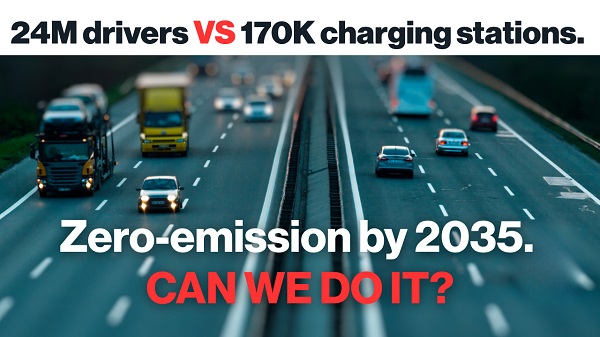
 Automotive1 day ago
Automotive1 day agoPower Struggle: Electric vehicles and reality
-
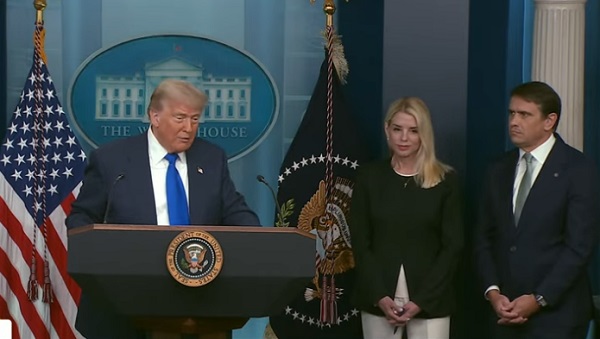
 Business1 day ago
Business1 day agoTrump on Canada tariff deadline: ‘We can do whatever we want’
-
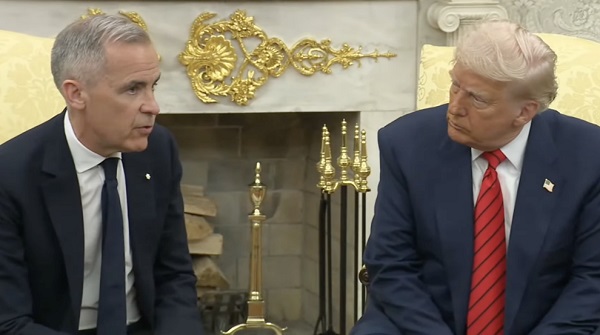
 Business9 hours ago
Business9 hours agoCanada Caves: Carney ditches digital services tax after criticism from Trump
-

 Crime9 hours ago
Crime9 hours agoSuspected ambush leaves two firefighters dead in Idaho
